
Digital Nomads – 5 Best Places for Portugal
The 5 Best Places for Digital Nomads in Portugal
Portugal has become a haven for digital nomads, offering a mix of affordable living and strong internet connectivity. You’ll find that the expat communities in Portugal are diverse and welcoming. In this article, you’ll discover The 5 Best Places for Digital Nomads in Portugal that cater to your work-life balance needs.
From the coastal allure of Ericeira to the historical charm of Porto, each destination has its unique advantages. No matter if you prioritize high-speed internet, scenic views, or expat communities, this guide will help you choose the perfect place to settle and thrive as a digital nomad in Portugal.

Heya! I’m Juan, I’m a recent newcomer to the travel scene but I am loving every minute of it. I am eager to share my stories and experiences as I go 🙂
Affiliate Disclosure: Some of the links on our site are affiliate links, meaning, at no additional cost to you, we may earn a commission if you click through and make a purchase. This helps us to continue providing valuable content and supports our efforts in bringing the travel community together. We only recommend products and services we believe in and think you’ll find useful. Complete details are included in our affiliate disclaimer. Thank you for your support!
In a Hurry? Here's our Key Info for This Article
- Porto offers the best cultural experiences for digital nomads
- Ericeira is ideal for surfing enthusiasts and remote work
- Faro provides a coastal environment with reliable WiFi
- Cascais combines historical charm with modern amenities
- Madeira boasts year-round pleasant weather and strong internet connectivity
- Coimbra is perfect for those looking for a mix of academia and digital work
Stay Connected
Things to Do
Essential Apps
Surfshark VPN
Stay safe online and continue accessing all your services just like back home.
Budget Tips
What is a Digital Nomad?
A digital nomad is someone who uses technology to work remotely, often while traveling or living in different places. You’re not bound by a traditional office; instead, your office can be a café in Paris, a beach in Bali, or a co-working space in Lisbon. This lifestyle allows you to explore new cultures and environments, all while maintaining your professional commitments. It’s essential to have a reliable internet connection and the right tools to manage your tasks efficiently. For instance, you can explore Icelands digital nomad hotspots for an inspiring work environment. Flexibility, independence, and a sense of adventure are key traits for in this lifestyle. The rise of co-working spaces and remote work opportunities has made this lifestyle more accessible than ever.
"You're the CEO of your own life. Someone else may be calling the shots during your 9 to 5, but in the grand scheme of things, it's your life. You have the ability to take the reins and steer your life in a different direction if you choose. Exercise this power and live a memorable life.
Take risks, upskill your life, and invest in yourself.Wanderlust is addictive. Be careful with it. It's like a drug, I swear. It's very easy to get swept away and caught in the free spirit flow of travel, forgetting about reality. It's important to set boundaries and be responsible for your work. After all, you're living the dream only because of the work you do and the value you create.
Favourite Destination: Lisbon, Portugal"
Other Places to Work Remotely in Europe
The 5 Best Places for Digital Nomads in Portugal
| Destination | Best for | Best Time to Visit | Average Wifi Speeds |
|---|---|---|---|
| Lisbon | Cultural experiences and coworking spaces | March to May | 50 Mbps |
| Porto | Historical charm and wine | April to June | 40 Mbps |
| Ericeira | Surfing and coastal living | September to November | 30 Mbps |
| Faro | Sunny beaches and relaxation | May to September | 35 Mbps |
| Cascais | Luxury lifestyle and scenic beauty | April to October | 45 Mbps |
1. Lisbon – Best for Digital Nomads
Lisbon, Portugal‘s capital, has grown into a haven for digital nomads. With its stunning architecture and culture, this city offers a unique mix of historical charm and modern amenities.

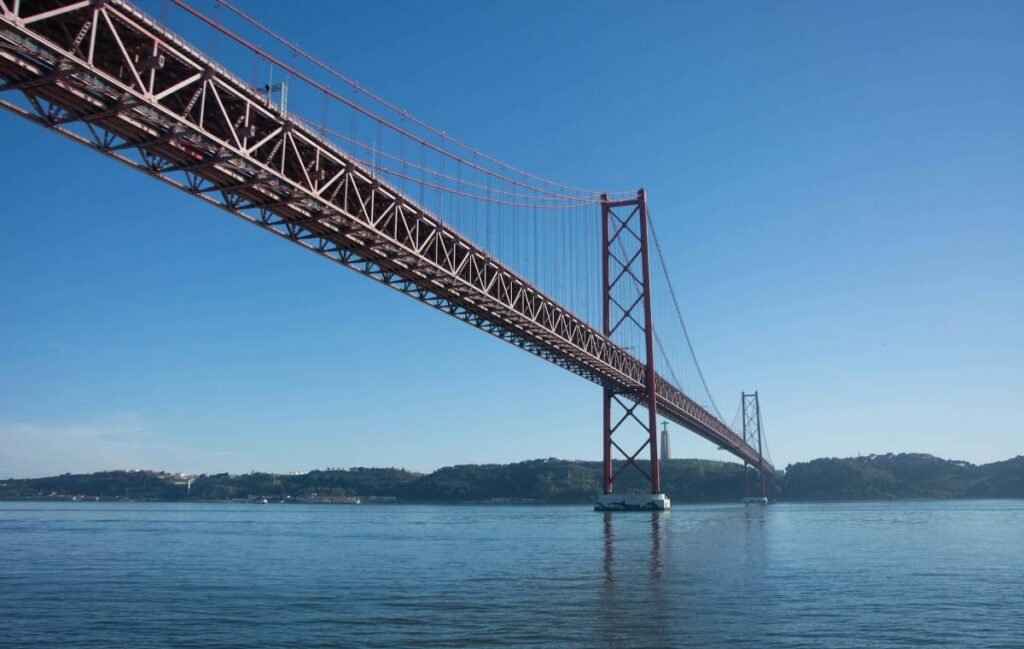
Top Attractions
Lisbon boasts an array of attractions that cater to various interests. History buffs will find the Belém Tower and Jerónimos Monastery fascinating. These UNESCO World Heritage sites not only showcase stunning Manueline architecture but also offer insights into Portugal’s Age of Discoveries. Art enthusiasts should visit the Calouste Gulbenkian Museum, which houses an impressive collection ranging from ancient to contemporary works. For a taste of local life, wander through the Alfama district with its narrow streets and traditional Fado music. Don’t miss the LX Factory, a creative hub filled with shops, restaurants, and street art, perfect for a day of exploration.
Best Time to Visit
The best time to visit Lisbon is during the spring (March to May) and autumn (September to October). These months offer mild weather and fewer tourists. Summer can be quite hot and crowded, while winter is cool and quieter, making it an ideal time for a more relaxed visit.
Local Cuisines
Lisbon’s culinary scene is a delightful mix of traditional Portuguese flavors and contemporary twists. Here are some must-try dishes:
– Bacalhau à Brás: A comforting dish made with shredded salted cod, onions, and thinly chopped fried potatoes, bound together with scrambled eggs.
– Pastéis de Nata: These iconic custard tarts are a sweet treat that you can find in almost every bakery.
– Sardinhas Assadas: Grilled sardines served with a side of roasted peppers and potatoes, perfect for a summer meal.
– Cozido à Portuguesa: A hearty stew featuring a mix of meats, sausages, and vegetables, offering a true taste of Portuguese home cooking.
Budgeting for Lisbon
Lisbon offers affordable living in Portugal. Expect to pay around $50-$80 per night for mid-range accommodation. Dining at a mid-tier restaurant will cost approximately $15-$30 per meal. The city is a great option for those looking for quality experiences without breaking the bank.
2. Porto – A Symphony of History and Culture
Porto, Portugal’s second-largest city, is a delightful mix of historic charm and modern vibrancy. Famous for its Port wine and stunning architecture, Porto offers a tapestry of experiences for every traveler.
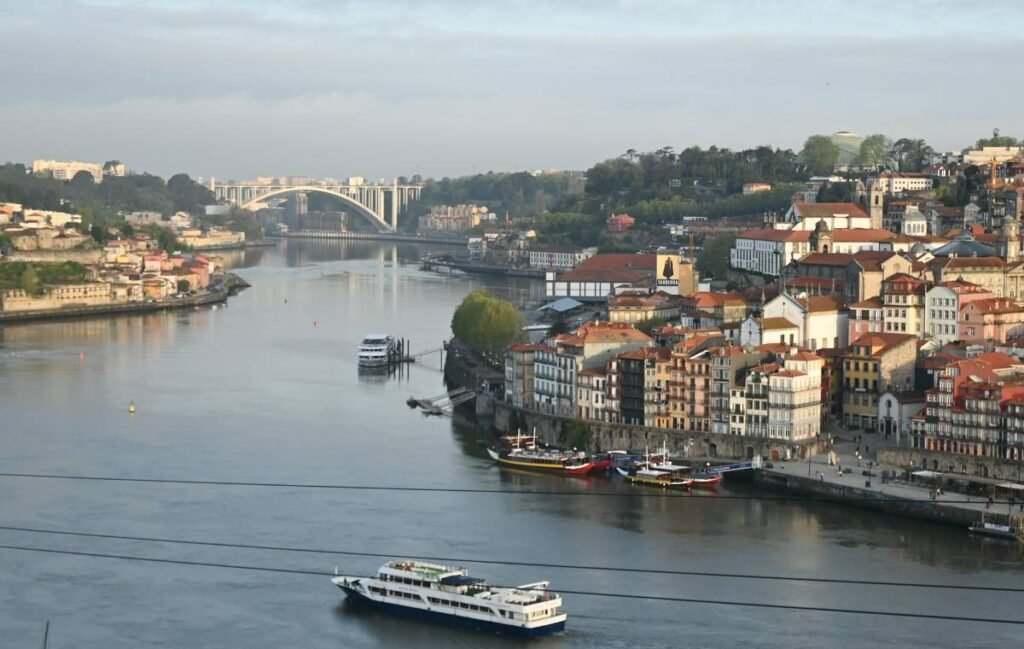
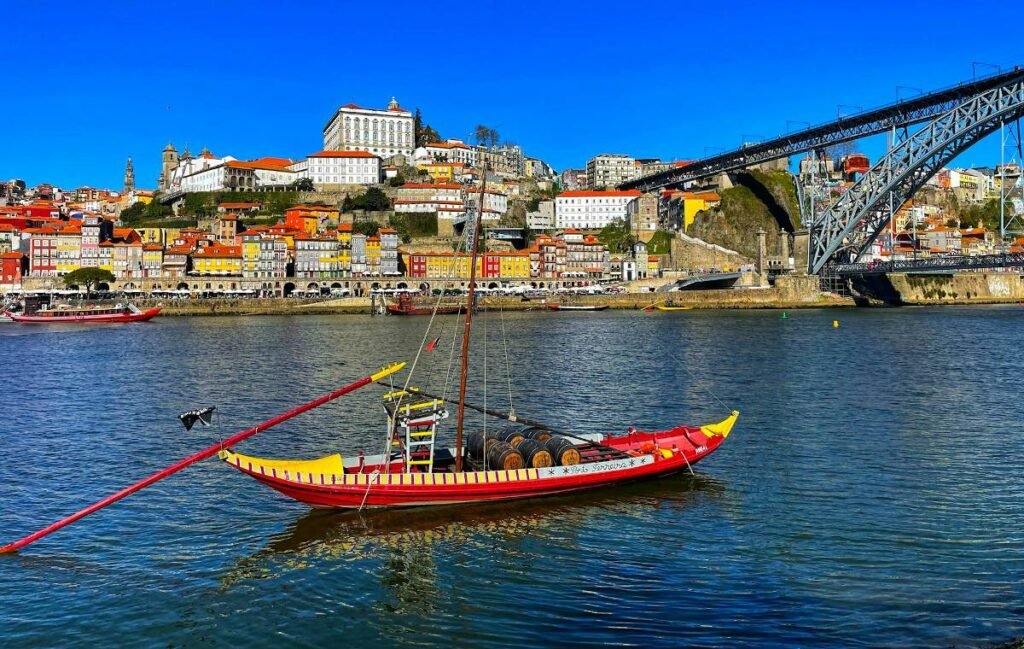
Top Attractions
In Porto, you’ll find an array of attractions that cater to different tastes. Start with the iconic Dom Luís I Bridge, an architectural marvel offering breathtaking views over the Douro River. History enthusiasts will be captivated by the Livraria Lello, one of the world’s most beautiful bookstores, said to have inspired J.K. Rowling’s Harry Potter series. Don’t miss the São Bento Railway Station, adorned with stunning azulejo tiles depicting Portugal’s history. For a touch of nature, wander through the Crystal Palace Gardens. And, of course, a visit to the cellars of Vila Nova de Gaia to sample some authentic Port wine is a must.
Best Time to Visit
The best time to visit Porto is during the spring (March to May) or fall (September to November) when the weather is pleasant, and the tourist crowds are thinner. Summers can be quite hot, while winters are mild but can be rainy.
Local Cusines
Porto’s cuisine is a delightful adventure for your taste buds. Here are some must-try dishes:
– Francesinha: A hearty sandwich filled with layers of cured meats, topped with melted cheese and a beer-based sauce.
– Tripas à Moda do Porto: A traditional tripe stew with white beans, sausage, and vegetables, reflecting the city’s maritime heritage.
– Bacalhau à Gomes de Sá: A comforting dish of salted cod, potatoes, onions, and olives, baked to perfection.
– Pastel de Nata: While not exclusive to Porto, these creamy custard tarts are a must-try, often enjoyed with a sprinkle of cinnamon.
Budgeting for Porto
Porto is relatively affordable. Expect to pay around $50-$100 per night for mid-range accommodation. Dining at a mid-tier restaurant will cost around $15-$25 per meal. Public transport is economical, making it easy to explore the city without breaking the bank..
3. Ericeira – Best for Surfing and Seafood
Ericeira, Portugal, is a quaint fishing village with a reputation for world-class surfing and delectable seafood.
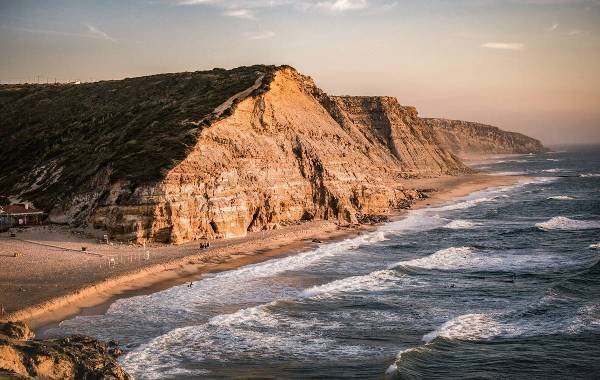
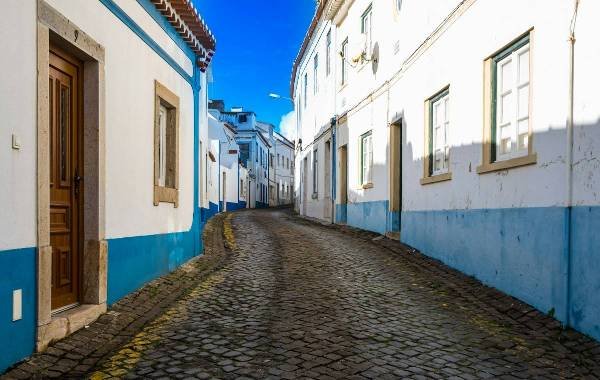
Top Attractions
Ericeira’s surf spots are legendary, especially Ribeira d’Ilhas, one of the best waves in Europe. The village’s cobbled streets and whitewashed buildings offer a picturesque backdrop for leisurely strolls. The Ericeira World Surfing Reserve is a must-visit, as it’s one of only a few reserves globally dedicated to preserving surf ecosystems. For those interested in history, the São Sebastião Chapel, with its intricate azulejos (Portuguese tiles), provides a cultural touch. If you prefer nature, the nearby Sintra-Cascais Natural Park offers hiking trails and breathtaking views. Lastly, the fish market is a delightful spot to witness local life and pick up some fresh seafood. Check out the 5 best surf spots that Portugal has to offer, they also offer great surf camps for beginners.
Best Time to Visit
The prime time to visit Ericeira is between May and September, offering warm weather perfect for beach activities. Early autumn brings fewer tourists and still-pleasant temperatures. Winter months are quieter but can be wet and windy.
Local Cuisines
Ericeira’s culinary scene is a seafood lover’s dream. The freshness and variety are unparalleled. Here are some must-try dishes:
– Amêijoas à Bulhão Pato: A mouth-watering clam dish cooked in garlic, olive oil, and fresh coriander.
– Polvo à Lagareiro: Octopus roasted with olive oil and garlic, served with potatoes.
– Caldeirada de Peixe: A hearty fish stew with an assortment of local catch, seasoned with tomatoes, onions, and peppers.
– Pastéis de Nata: While not unique to Ericeira, these iconic Portuguese custard tarts are a delightful way to end any meal.
Budgeting for Ericeira
Ericeira offers affordable living in Portugal. A mid-tier restaurant meal costs around $15-$25 per person. For accommodation, expect to pay between $70-$150 per night for a decent hotel room or an Airbnb. The overall cost makes it an attractive destination for digital nomads and expat communities in Portugal.
4. Faro – Best for Quiet Coastal Living
Faro, the capital of Portugal’s Algarve region, offers a coastal experience with history and beautiful landscapes.
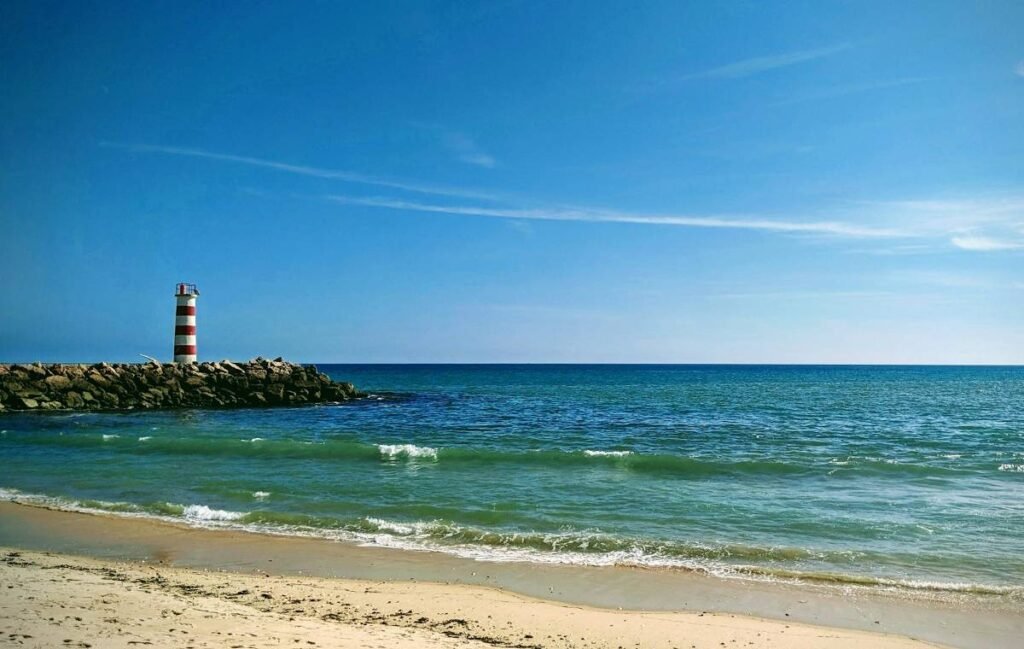
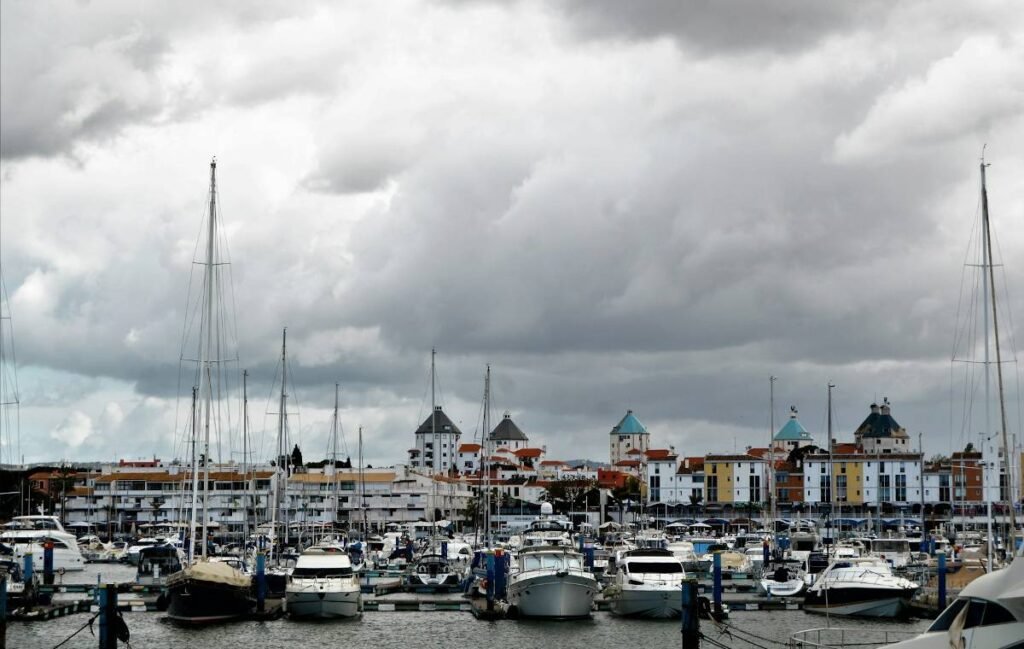
Top Attractions
Faro boasts a variety of attractions that cater to different interests. The Old Town, surrounded by ancient city walls, is a must-visit with its cobbled streets and Sé Cathedral. The Ria Formosa Natural Park is a haven for bird-watchers and nature enthusiasts, offering stunning views and diverse wildlife. For history buffs, the Municipal Museum housed in a 16th-century convent provides fascinating insights into the region’s past. The Carmo Church, with its Chapel of Bones, is both eerie and intriguing. For a more relaxed day, the sandy beaches of Ilha Deserta and Ilha da Culatra are just a short boat ride away.
Best Time to Visit
The best time to visit Faro is during the spring (April to June) and autumn (September to October) when the weather is mild and the tourist crowds are thinner. These periods offer comfortable temperatures for exploring the city’s attractions and enjoying outdoor activities.
Local Cuisines
Faro’s cuisine is a delightful mix of seafood and traditional Portuguese flavors. Here are some must-try dishes:
– Cataplana de Marisco: A seafood stew cooked in a special copper pot, featuring clams, prawns, and other shellfish.
– Arroz de Marisco: A seafood rice dish similar to paella, brimming with fresh catches from the Atlantic.
– Sardinhas Assadas: Grilled sardines, typically served with boiled potatoes and salad, are a simple yet flavorful treat.
– Pastel de Nata: While not unique to Faro, these famous Portuguese custard tarts are a must for any visit.
Budgeting for Faro
Faro can cater to various budgets. Accommodation ranges from $30 for budget options to $100+ for mid-tier hotels. A meal at a mid-tier restaurant will set you back around $20-$30. Faro’s affordability makes it an attractive destination for many travellers. If you are looking for a great budget comparison, then look into Greece’s hotspots and see how it compares.
5. Cascais – Coastal Elegance for Digital Nomads
Cascais is a coastal town in Portugal that offers a mix of history, stunning beaches, and modern amenities, making it perfect for digital nomads.
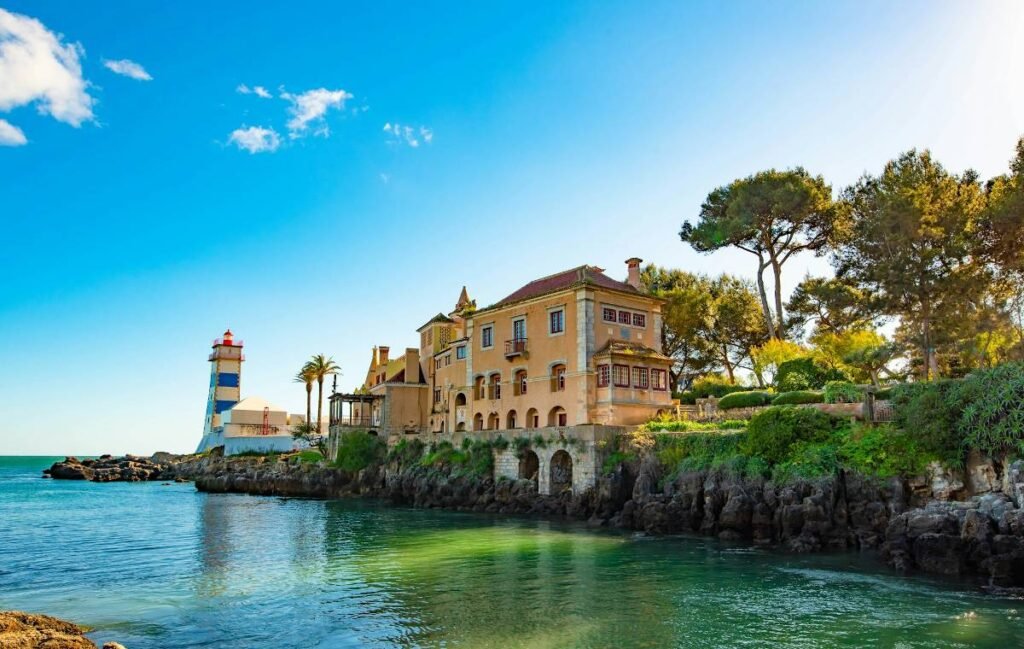
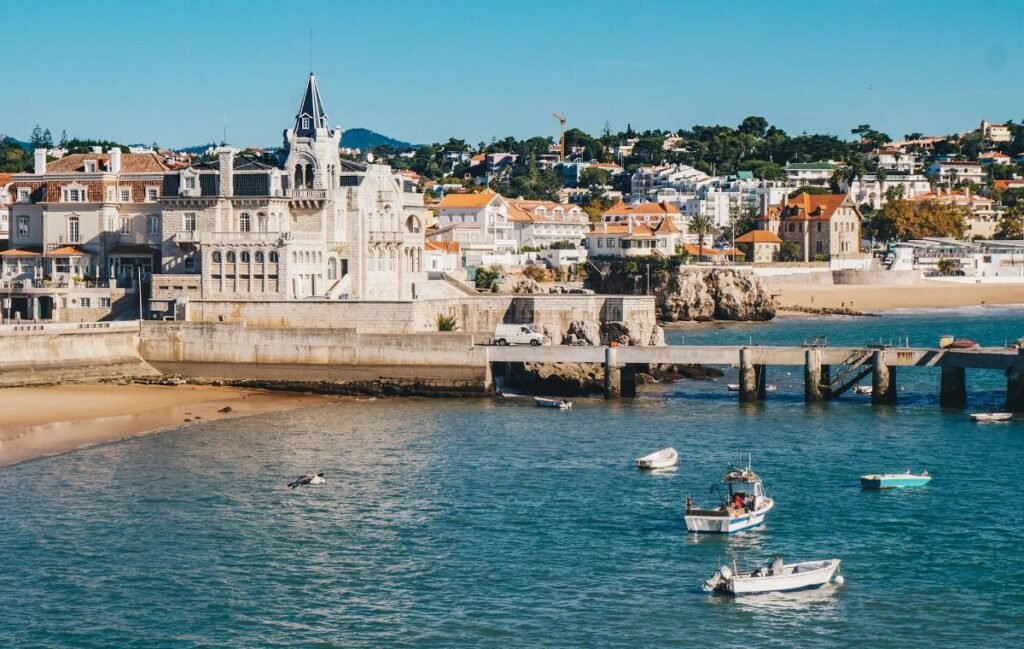
Top Attractions
Cascais boasts a variety of attractions that cater to different tastes. The Boca do Inferno, a natural rock formation where the sea crashes into the rocks, is a sight to behold. For history buffs, the Museu Condes de Castro Guimarães showcases a collection of art and artifacts in a picturesque setting. If you’re into outdoor activities, the Guincho Beach is ideal for surfing and kitesurfing. The town also features the picturesque Parque Marechal Carmona, perfect for a leisurely stroll or a picnic. Don’t miss the Cascais Marina, where you can enjoy a variety of dining and shopping options while taking in the scenic views.
Best Time to Visit
The best time to visit Cascais is between May and September when the weather is warm and sunny. During these months, you can enjoy outdoor activities and beach days. However, if you prefer fewer crowds, consider visiting in the shoulder seasons of April or October.
Local Cuisines
Cascais offers a delightful array of local cuisine that you must try. Seafood is a staple here, and you can enjoy it fresh and cooked to perfection. Some must-try dishes include:
– Bacalhau à Brás: A classic Portuguese dish made with shredded salted cod, onions, and finely chopped potatoes, bound together with scrambled eggs.
– Polvo à Lagareiro: Octopus roasted with garlic and olive oil, served with potatoes.
– Amêijoas à Bulhão Pato: Clams cooked in a garlicky white wine sauce, perfect for seafood lovers.
– Pastéis de Nata: These famous Portuguese custard tarts are a sweet treat you can’t miss.
Budgeting for Cascais
Cascais offers a range of accommodation options, with nightly costs starting at around $60 for a budget hotel. A mid-tier restaurant meal will set you back around $15-$20 per person. Overall, Cascais provides an affordable living experience, making it a great choice for digital nomads.
Packing Guides and Tips
When preparing for a digital nomad stint in Portugal, efficient packing is essential. Start with weather-appropriate clothing. In Porto, layers are key due to its variable climate. Pack lightweight, breathable clothes for the hot summers of Faro and Ericeira, but don’t forget a light jacket for cooler evenings. For the temperate island of Madeira, versatile outfits that can transition from day to night will serve you well.
Electronics are another critical consideration. Reliable internet connectivity Portugal offers is a boon, but ensure you have a robust power bank and a universal adapter. Portugal’s outlets are Type C and F, so double-check your gear compatibility. A portable Wi-Fi device can be a lifesaver, especially if you plan to explore remote areas where connectivity might be sketchy. A camera is always a good idea, the Insta360 will capture your whole trip in 360 and is light and compact for easy travel.
Lastly, make your life easier by packing smart for mobility. A sturdy, comfortable backpack can ease your travels between the expat communities in Portugal. Choose one with a laptop compartment and ample space for your essentials. And don’t forget a reusable water bottle and a compact umbrella—small but invaluable items. Make sure you are covered by insurance before travelling anywhere. Look into companies like Safetywing for great coverage.
Concluding Thoughts
So, there you have it. Porto’s historic charm, Lisbon’s tech scene, and Ericeira’s laid-back surf culture make Portugal a digital nomad’s dream. Each destination offers something unique, from coworking spaces to reliable internet and delicious local cuisine. No matter if you’re drawn to Porto’s riverside views, Lisbon’s busy neighborhoods, or Ericeira’s coastal quietiity, Portugal has plenty to keep you inspired and productive. And remember, with affordable living costs and a great climate, settling in as a digital nomad in Portugal is a breeze. Enjoy your journey and make the most of this incredible opportunity.
Portugal’s Top 5 Spots for Digital Nomads FAQ
Lisbon, Porto, and Faro are among the top choices. Lisbon offers a tech scene, Porto has a cultural atmosphere, and Faro provides stunning coastal views.
Yes, Portugal boasts excellent internet connectivity, especially in urban areas. Lisbon and Porto have numerous co-working spaces with high-speed internet, making them ideal for remote work.
Portugal is relatively affordable compared to other Western European countries. Lisbon and Porto are pricier, but cities like Faro and Coimbra offer lower living costs without sacrificing amenities.
Absolutely! Lisbon, Porto, and Faro all have multiple co-working spaces. Ericeira and Cascais also offer co-working options, catering to a growing digital nomad community. Learning Portuguese will be very helpful when tying to make new friends and build a community.
Yes, digital nomad communities are in Portugal. Lisbon and Porto have active communities, and you’ll find plenty of meetups and networking events. Ericeira and Faro are also popular for a more laid-back, coastal vibe. For more information on France, check out Top France digital havens.


















